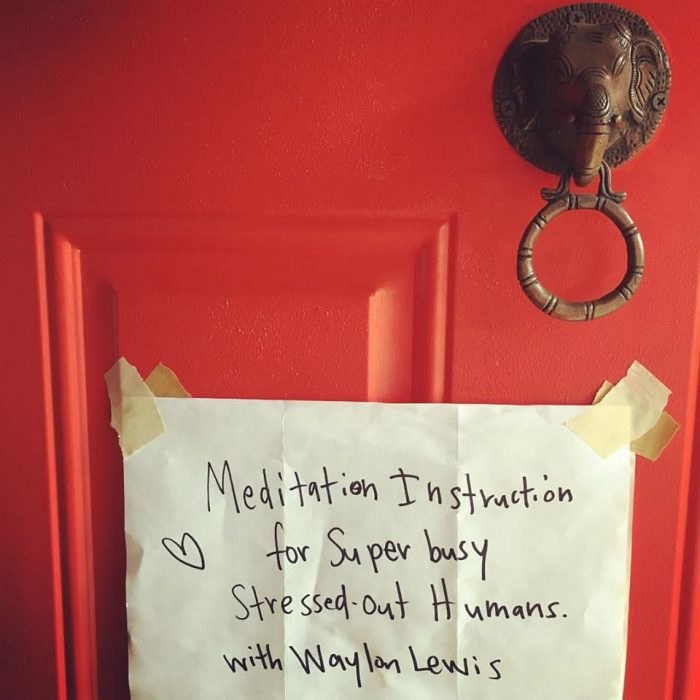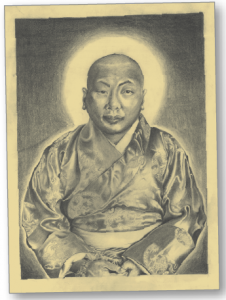
How to Meditate: The Dathun Letter, via Chögyam Trungpa Rinpoche.
Too busy to meditate? This Elephant Academy course, Meditation for Crazy-busy People, is for you. It’s your lifelong companion for the moments when busyness and overwhelm strike, and we’re in need of a little space, a little groundedness, and a long, deep breath. Get the course.
Mindfulness isn’t about perfection. Mindfulness is about practice.
It’s not hypocritical to meditate…but lose one’s temper, discover yet another dark corner of ignorance in oneself, or see how we’re attached to something or someone.
Our neuroses is part of being human. Our basic goodness, beneath that neuroses, is always there. That interplay is what meditation is for: returning us to ourselves, shining a light of awareness into our confusion. ~ Waylon
How to Meditate, the classic instruction.
In 1973, the Tibetan meditation master Chögyam Trungpa introduced a month-long period of meditation called Dathün, which he recommended to all of his students. This intensive meditation practice retreat, where even meals are taken simply, in silence, is to this day a fundamental part of the Shambhala Buddhist path.
~ Carolyn Gimian.
The shamatha style of meditation is particularly recommended by the Buddha. It has been the way for beginning meditators for 2,500 years. To describe meditation we could use the phrase touch and go. You are in contact, you’re touching the experience of being there, actually being there-—and then you let go. That applies to awareness of your breath on the cushion and also beyond that, to your day-to-day living awareness. The point of touch and go is that there is a sense of feel. The point of touch is that there is a sense of existence, that you are who you are.
When you sit on the cushion, you feel you are sitting on the cushion and that you actually exist. You are there, you are sitting; you are there, you are sitting. That’s the touch part. The go part is that you are there—and then you don’t hang on to it. You don’t sustain your sense of being, but you let go of even that. Touch and go.
When you meditate your posture should be correct. It is recommended that you sit cross-legged on a meditation cushion, as opposed to hanging out in any convenient posture. You sit properly. You have a straight spine; your breath doesn’t strain, and your neck doesn’t strain. So sit: upright, cross-legged. If necessary, you can change your posture and rearrange yourself. There’s no point in punishing yourself and trying to strain constantly.
When you sit up properly, you are there. Your breathing follows naturally. I’ve noticed that when people see something interesting happening in a movie, everybody sits up in perfect posture. So that’s an example for us. It is happening, it is your life, and you are upright, and you are breathing. Practice is very personal and direct.
The attitude towards breathing in meditation is to become the breathing. Try to identify completely rather than watching it. You are the breath; the breath is you. Breath is coming out of your nostrils, going out and dissolving into the atmosphere, into the space. You put a certain energy and effort towards that. Then, as for in-breathing, should you try to deliberately draw things in? That’s not recommended. Just boycott your breath; boycott your concentration on the breath. As your breath goes out, let it dissolve, just abandon it, boycott it.
So in-breathing is just space. Physically, biologically, one does breathe in, obviously, but that’s not a big deal. Then another breath goes out—be with it. So it’s out, dissolve, gap; out, dissolve, gap. It is constant opening, gap, abandoning, boycotting. Boycotting in this case is a significant word. If you hold onto your breath, you are holding onto yourself constantly. Once you begin to boycott the end of the outbreath, then there’s no world left, except that the next outbreath reminds you to tune in. So you tune in, dissolve, tune in, dissolve, tune in, dissolve.
Thoughts arise in the midst of practice: “How should I do my yoga?,” “When can I write another article?,” “What’s happening with my investments?,” “I hate so and so who was so terrible to me,” “I would love to be with her” and “What’s the story with my parents?” All kinds of thoughts begin to arise naturally. If you have lots of time to sit, endless thoughts happen constantly.
The approach to that is actually no approach. Reduce everything to thought level rather than to concepts. Usually, if you have mental chatter, you call it your thoughts. But if you have deeply involved emotional chatter, you give it special prestige. You think those thoughts deserve the special privilege of being called emotion. Somehow, in the realm of actual mind, things don’t work that way. It’s just thinking: thinking you’re horny, thinking you’re angry. As far as shamatha practice is concerned, your thoughts are no longer regarded as V.I.P.s while you meditate. You think, you sit; you think, you sit; you think, you sit. You have thoughts, you have thoughts about thoughts. Let it happen that way. Call them thoughts.
Then, a further touch is necessary. Emotional states should not just be acknowledged and pushed off, but actually looked at. During meditation, you may experience being utterly aggressive, angry or lustful, whatever. You don’t just politely say to your emotion, “Hi. Nice seeing you again. You are okay. Goodbye, I want to get back to my breath.” That’s like meeting an old friend who reminds you of the past and rather than stopping to talk, you say, “Excuse me, I have to catch the train to my next appointment.” In the shamatha approach to practice you don’t just sign off. You acknowledge what’s happening, and then you look more closely as well. You don’t give yourself an easy time to escape the embarrassing and unpleasant moments, the self-conscious moments of your life. Such thoughts might arise as memories of the past, the painful experience of the present or painful future prospects. All those things happen: experience them and look at them, and only then do you come back to your breath. This is important.
If you feel that sitting and meditating is a way of avoiding problems, then that is the problem. In fact, most of the problems in life don’t come from being an aggressive or lustful person. The greatest problem is that you want to bottle those things up and put them aside, and you become an expert in deception. That is one of the biggest problems. Meditation practice should uncover any attempts to develop a subtle, sophisticated, deceptive approach.
Finally, in meditation, there’s a sense of individuality, a sense of person. Actually, we are here—we exist. What about the non-existence and egolessness that Buddhism emphasizes? What about spiritual materialism, wanting happiness and fulfillment from our practice? Aren’t we going to stray into some pitfall? Maybe you are. Maybe you are not. There’s no guarantee, since there’s no guarantor. However, it is possible that you could just do this technique very simply. I would recommend that you shouldn’t worry about future security, but just do this, directly, simply.
~


No comments:
Post a Comment